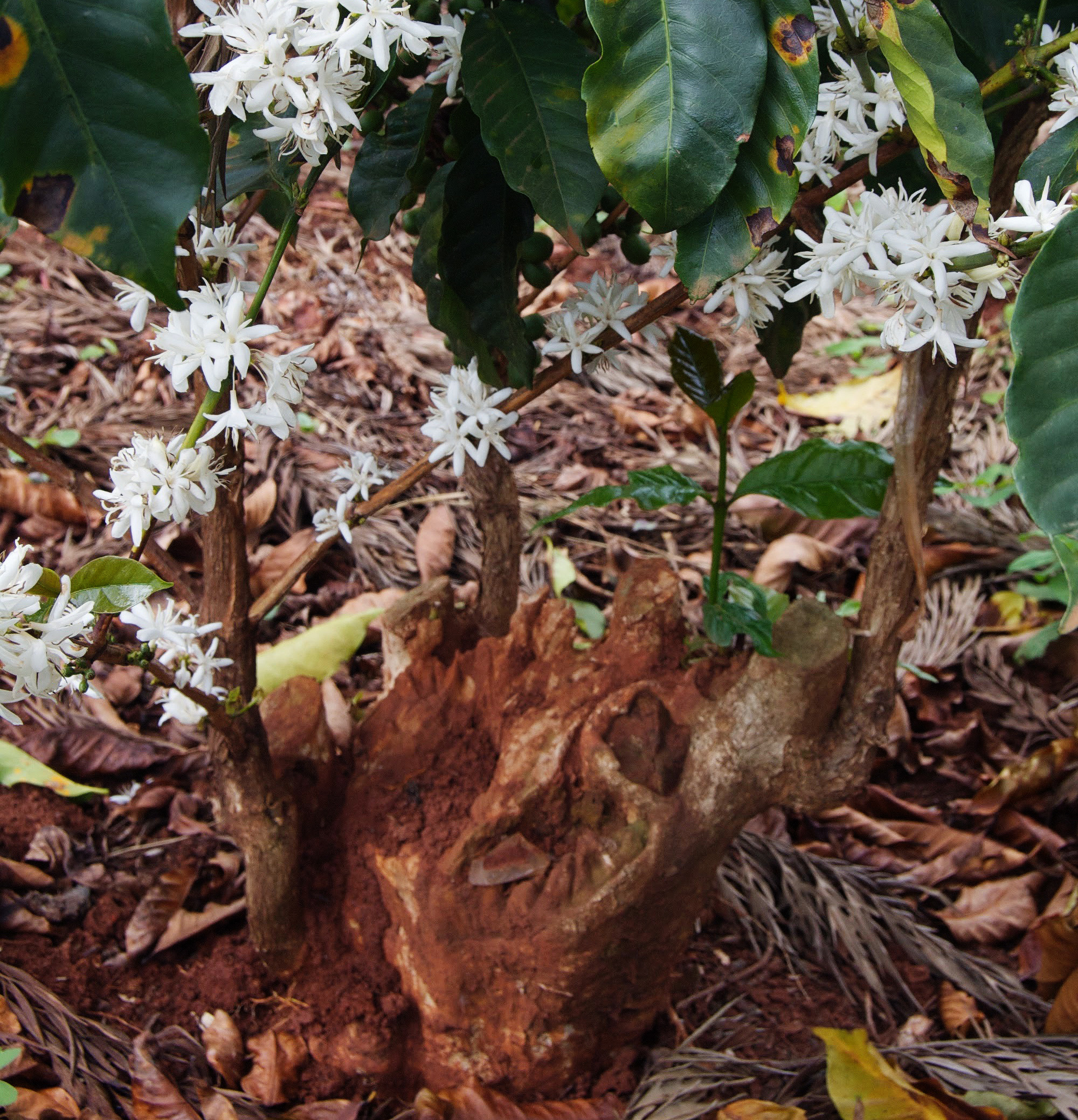Pruning is the selective removal of part of the coffee plant, including branches, but also buds, flowers, and fruit. Pruning can control size to make harvesting easier, encourage productive growth, protect against drought and disease, and ultimately improve yields.
Pruning is one of the most important farming practices to achieve reliable yields and healthy trees. Much of the research we’ve found on pruning comes from Kona, Hawaii – which is perhaps the most productive per acre anywhere in the world. This is in part because of the ideal growing conditions, but also because of the farming practices employed, including rigorous and often severe pruning systems.
Why Prune?
Coffee cherries usually only grow on new wood. As a coffee tree ages, growth slows down and more branches are produced. Fruiting branches become tangled and self-shading. As a result, the tree becomes less and less productive as it gets older. Pruning encourages new growth, reduces self-shading, and thus boosts yield.
Arabica also has a habit of overbearing. This means the tree will produce as much fruit as it can in any given year. When the fruit starts expanding and ripening, it uses up carbohydrate stores from the tree and needs large amounts of nitrogen from the soil. If there aren’t enough carbohydrates in reserve, or enough nitrogen to support growth, then leaves and branches will start to die as their food supplies are used up. This is known as dieback, and means that the following year there will be a very poor crop.
Even if branches don’t die back completely, the amount of carbohydrate accumulated by the time flowering takes place can affect the amount of flowers produced, and still affect the yield in the following year – so a heavy crop one year, that’s used up all the carbohydrate stores, will still result in a reduced crop the following year.
This pattern, of a heavy crop followed by a poor crop, is known as Biennial bearing.
